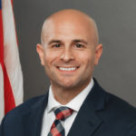
Don Rucker | June 19, 2018
Over the past decade, hospitals and physician offices have made tremendous gains in shifting their record-keeping from paper to computerized systems. This transition to electronic health records (EHRs) has engendered frustration among clinicians who expected computers to make their care more efficient, and among their patients who expected timely access to their information and seamlessly coordinated care.
To address these challenges, a bipartisan majority of Congress passed the 21st Century Cures Act of 2016 (Cures Act).
Read Full Post.

Don Rucker | April 24, 2018
I remember when visiting a city required paper maps and often actual guidebooks. Today, I tap on a map app on my phone, enter my destination, and review options for getting from point A to point B. In recent years, these applications have expanded to integrate ride-sharing, bike-sharing, and public transit information. Map apps provide two key real-time data points to help me compare the different options: the time it will take to get to my destination and the cost.
Read Full Post.

Teresa Zayas Cabán, PhD | January 17, 2018
Artificial intelligence (AI) – the ability of computers to learn human-like functions or tasks – has shown great promise. What was previously considered the sole domain of human cognition is already being leveraged successfully across many industries. Now, the technology sector is witnessing what appears to be important new advances in AI that are bringing a new wave of interest for how it might shape the future of health and healthcare.
Read Full Post.

Genevieve Morris | January 5, 2018
The 21st Century Cures Act (Cures Act), signed into law in December 2016, calls on the Office of the National Coordinator (ONC) to work with federal partners, including the National Institute of Standards and Technology (NIST), and the healthcare and health information technology (health IT) industries to provide interoperability for all.
Read Full Post.

Steven Posnack | October 17, 2017
Today, the Office of the National Coordinator for Health Information Technology (ONC) is announcing that the Healthcare Information and Management Systems Society (HIMSS) has successfully demonstrated that its testing method, as part of the Immunization Integration Program (HIMSS-IIP), can serve as an alternative to the current National Coordinator-approved method for testing transmissions to immunization registries.
Read Full Post.

